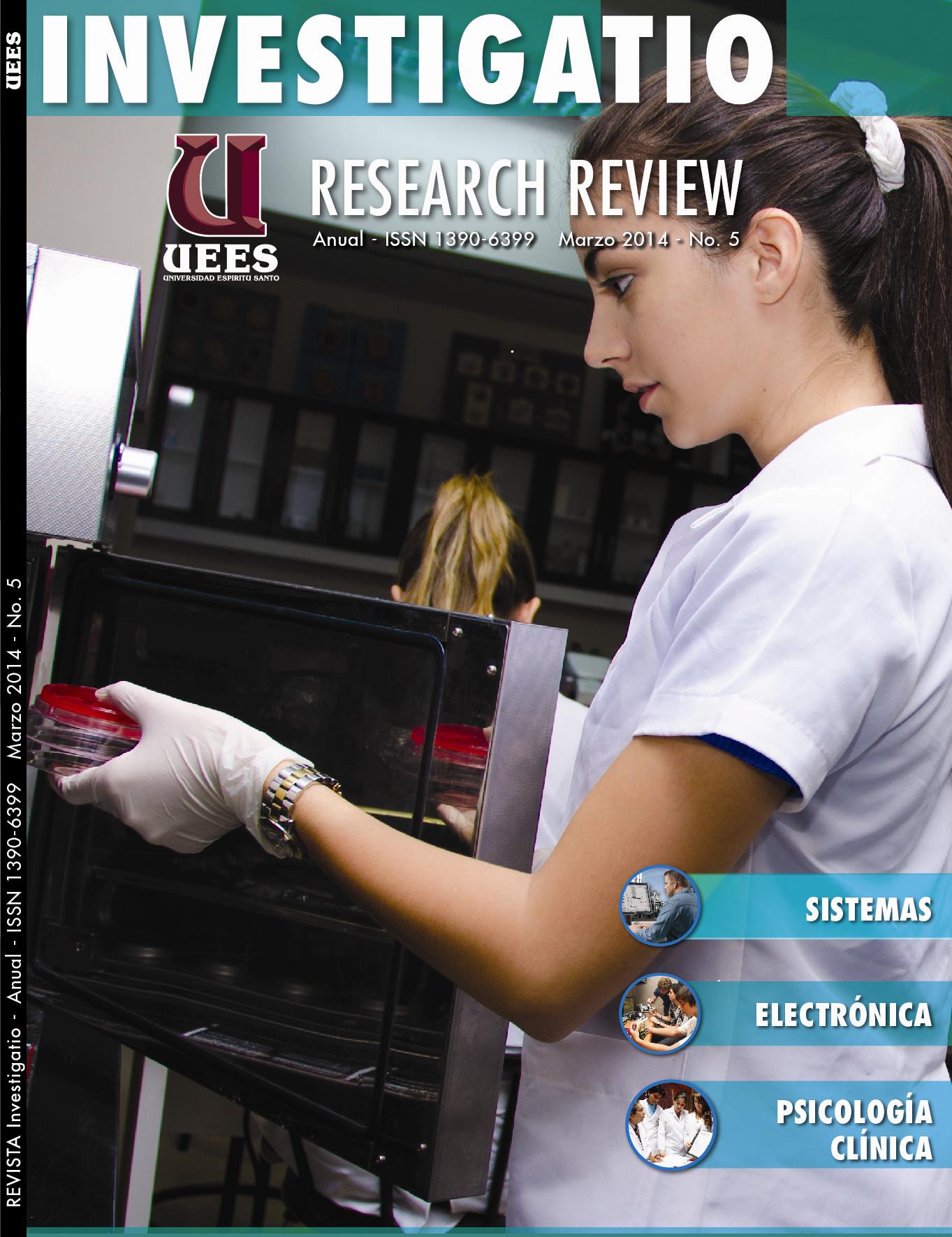Reconocimiento de hojas del árbol Pithecellobium Samán usando visión artificial
Main Article Content
Abstract
Existen algoritmos que ayudan en el aprendizaje de los agentes artificiales, de los cuales se aplicará en el presente trabajo los conocidos como, clasificadores en cascada. Los objetivos del presente estudio son: implementar y evaluar el rendimiento de ocho clasificadores en cascada usando dos tipos de extractores de características en el reconocimiento de hojas del árbol Pithecellobium Samán también conocido como árbol de Samán. Para la implementación de los clasificadores en cascada, se usa la librería EmguCV junto con Visual Studio y a cada clasificador, se le suministran imágenes del objeto a reconocer e imágenes que no lo sean. Los clasificadores se evaluarán usando las siguientes curvas: ROC (Receiver Operating Charactersistic) para calcular el área bajo la curva, DET (Detection Error Tradeoff) para evaluar las muestras positivas mal clasificadas y PR (Precision and Recall) para medir la precisión. Como resultado, el extractor más eficiente es el Local Binary Pattern (LPB).
Downloads
Article Details

This work is licensed under a Creative Commons Attribution-NonCommercial 4.0 International License.
INVESTIGATIO es de acceso abierto y el contenido está disponible de manera gratuita a través de su sitio web: http://revistas.uees.edu.ec/index.php/IRR/.
Para reforzar nuestra política de acceso abierto, la revista INVESTIGATIO se publica bajo una licencia Creative Commons Reconocimiento-No Comercial 4.0 Internacional (CC-BY-NC 4.0), la cual permite compartir (copiar y redistribuir el material en cualquier medio o formato) y adaptar (remezclar, transformar y crear a partir del material), bajo la condición de que se den los créditos correspondientes y no se haga uso comercial de los materiales.
References
Bowd, C., Weinreb, R. N., Balasubramanian, M., Lee, I., Jang, G., Yousefi, S., & Goldbaum, M. H. (2014). Glaucomatous Patterns in Frequency Doubling Technology (FDT) Perimetry Data Identified by Unsupervised Machine Learning Classifiers. Plos ONE, 9(1), 1-8. doi:10.1371/journal. pone.0085941.
Brown, A. (2013). THE ROBOTIC MOMENT. Mechanical Engineering, 135(9), 32- 37.
Chun, Z., Junan, Y., Jiyang, Z., Dongsheng, L., & Aixia, Y. (2014). Semi-Supervised Learning by Local Behavioral Searching Strategy. Applied Mathematics & Information Sciences, 8(4), 1781-1787. doi:10.12785/amis/080435.
de la Caridad Rivero-Hernández, D., Salgueiro- Sicilia, Y., & Domínguez-López, R. (2012). Evaluación de varias técnicas de aprendizaje automático en el Software Weka. (Spanish). Innovación Tecnológica, 18(3), 1-10.
Essannouni, L. L., & Aboutajdine, D. D. (2011). Correlation of robust Haar-like feature. Electronics Letters, 47(17), 961-962. doi:10.1049/el.2011.1534.
Fogarty, J., Baker, R.S., and Hudson, S.E. (2005). Case Studies in the use of ROC Curve Analysis for Sensor-Based Estimates in Human Computer Interaction. Proceedings of Graphics interface (GI 2005), pp. 129-136.
González-Pacheco, V., Malfaz, M., Fernández, F., & Salichs, M. A. (2013). Teaching Human Poses Interactively to a Social Robot. Sensors (14248220), 13(9), 12406-12430. doi:10.3390/s130912406.
Hewett, T. T., Baecker, R., Card, S., Carey, T., Jean, G., Mantei, M., . . . Verplank, W. (1992). .ACM SIGCHI Curricula for Human-Computer Interaction. New York: ACM.
Hong, Z., Xi-Jun, L., & Peng, Y. (2013). Research on Face Recognition Based on Embedded System. Mathematical Problems In Engineering, 1-6. doi:10.1155/2013/519074.
Lienhart, R., & Maydt, J. (2002). An Extended Set of Haar-like Features for Rapid Object Detection. IEEE ICIP, 1, 900-903.
Martins, J. J., Oliveira, L. L., Nisgoski, S. S., & Sabourin, R. R. (20l3). A database for automatic classification of forest species. Machine Vision & Applications, 24(3) , 567- 578. doi:10.1007/s00138-012-0417-5.
Mendieta, V. (2013). Detección y reconocimiento de semáforos por visión artificial. Universidad Carlos III de Madrid, España.
Ojansivu, V., Linder, N., Rahtu, E., Pietikäinen, M., Lundin, M., Joensuu, H., & Lundin, J. (2013). Automated classification of breast cancer morphology in histopathological images. Diagnostic Pathology, 8(Suppl 1), 1-4. doi:10.1186/1746-1596-8-S1-S29.
Okori, W., & Obua, J. (2011). SUPERVISED LEARNING ALGORITHMS FOR FAMINE PREDICTION. Applied Artificial Intelligence, 25(9), 822-835. doi:10.1080/08839514.2011.611930.
Phinyomark, A., Phukpattaranont, P., & Limsakul, C. (2012). INVESTIGATING LONG-TERM EFFECTS OF FEATURE EXTRACTION METHODS FOR CONTINUOUS EMG PATTERN CLASSIFICATION. Fluctuation & Noise Letters, 11(4), -1. doi:10.1142/S0219477512500289.
Poole, D., Mackworth, A., & Goebel, R. (1998). Computational Intelligence : A logical Approach. New York: Oxford University Press.
Pruthi, S. (2012). Wireless Robotics: A History, an Overview, and the Need for Standardization. Wireless Personal Communications, pp 597-609.
Rossel, S., & Norvig, P. (2004). Inteligencia Artificial, un enfoque moderno. Madrid: Prentice Hall.
Serrano, J. F., Díaz, A. B., & Calle, Á. S. (2003). Visión por computador. Madrid: Universidad Rey Juan Carlos.
Suruliandi, A. A., Meena, K. K., & Reena Rose, R. R. (2012). Local binary pattern and its derivatives for face recognition. IET Computer Vision, 6(5), 480-488. doi:10.1049/iet-cvi.2011.0228.
Teahan, W. J. (2010). Artificial Intelligence — Agents and Environments. BookBoon.
Tresadern, P. P., lonita, M. M., & Cootes, T. T. (2012). Real-Time Facial Feature Tracking on a Mobile Device. International Journal Of Computer Vision, 96 (3), 280-289. doi:10.1007/s11263-011-0464-9.
Viola, P., & Jones, M.J. (2004). Robust Real-Time Face Detection. International Journal Of Computer Vision, 57 (2),, 137-154.

